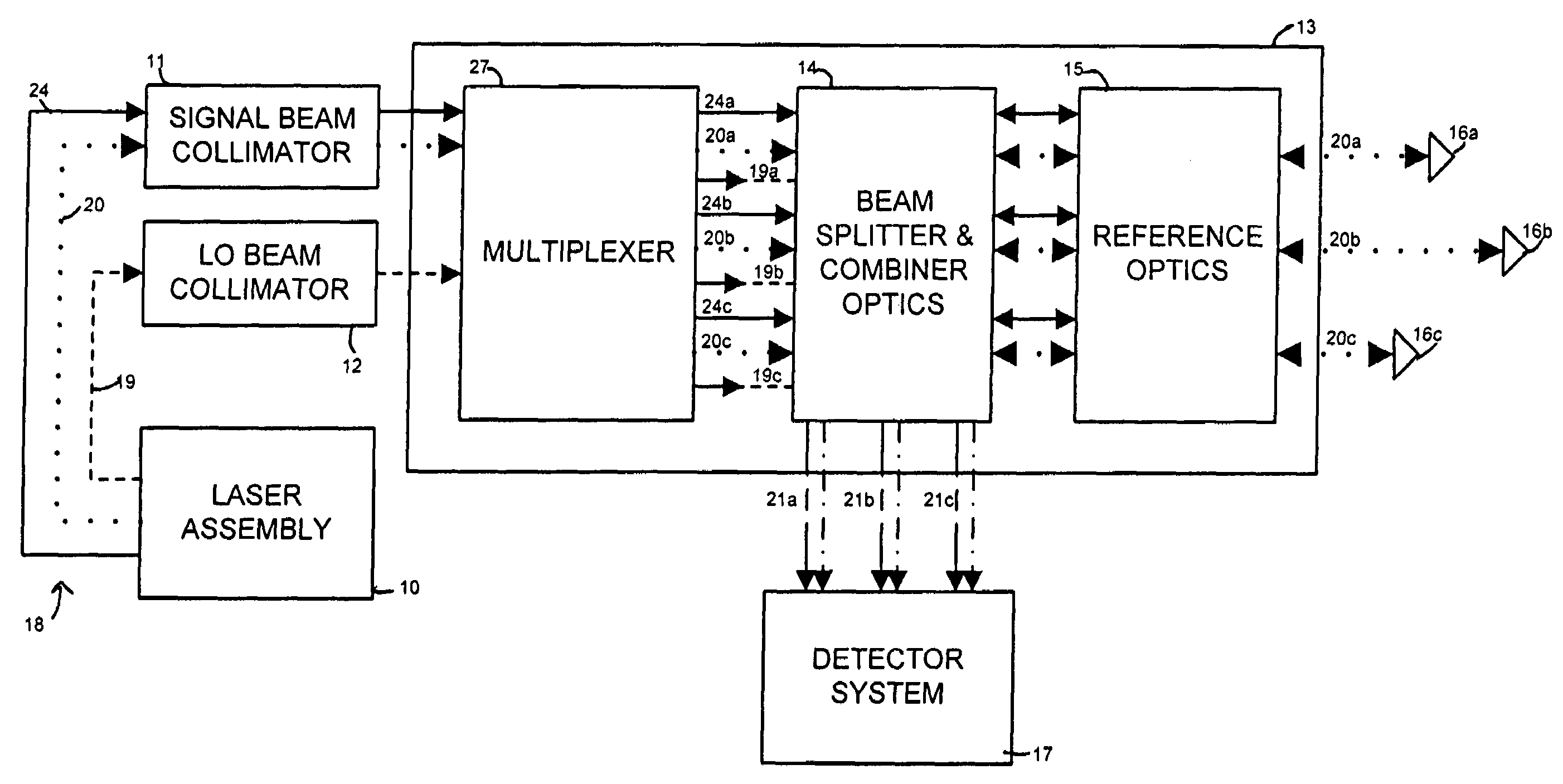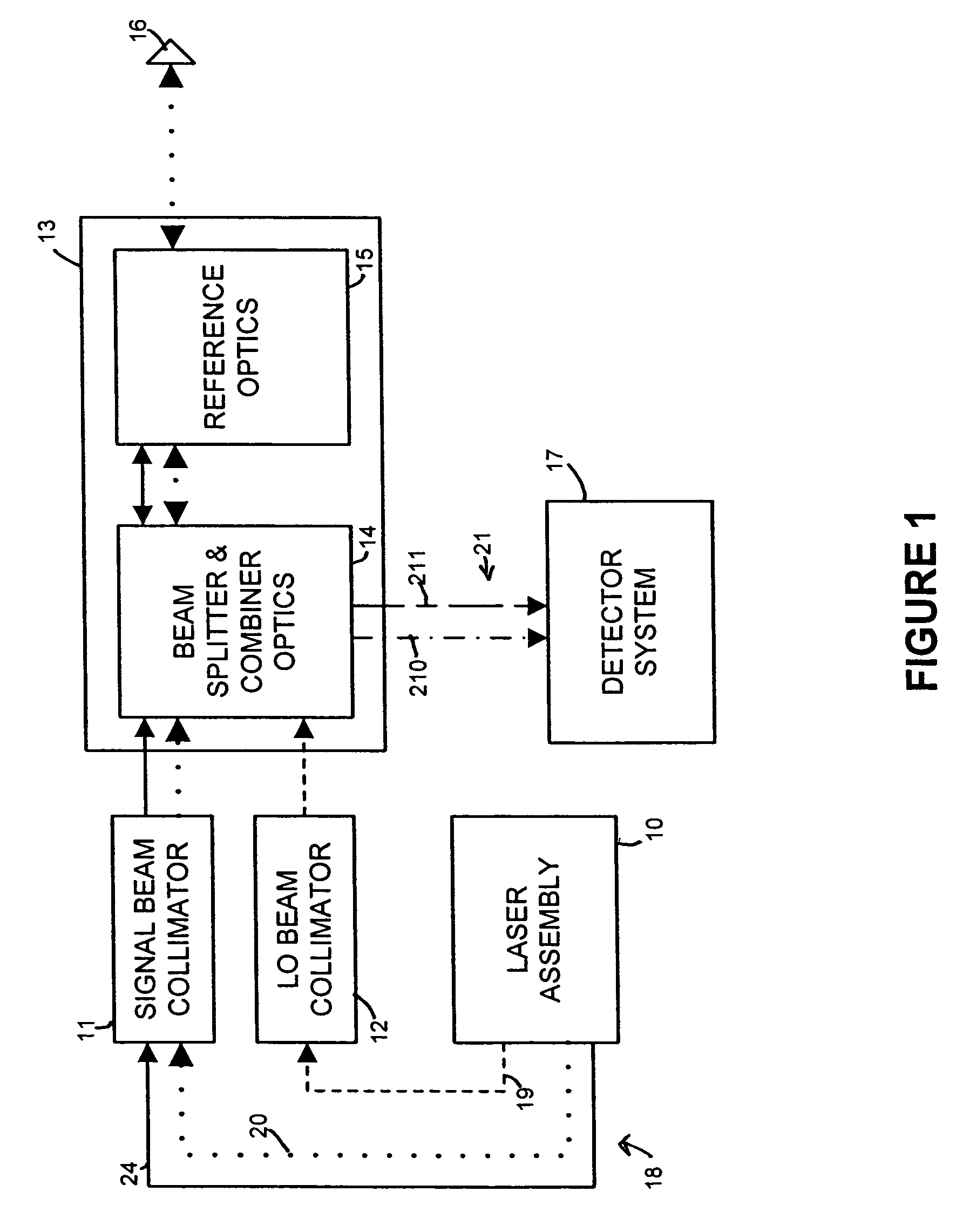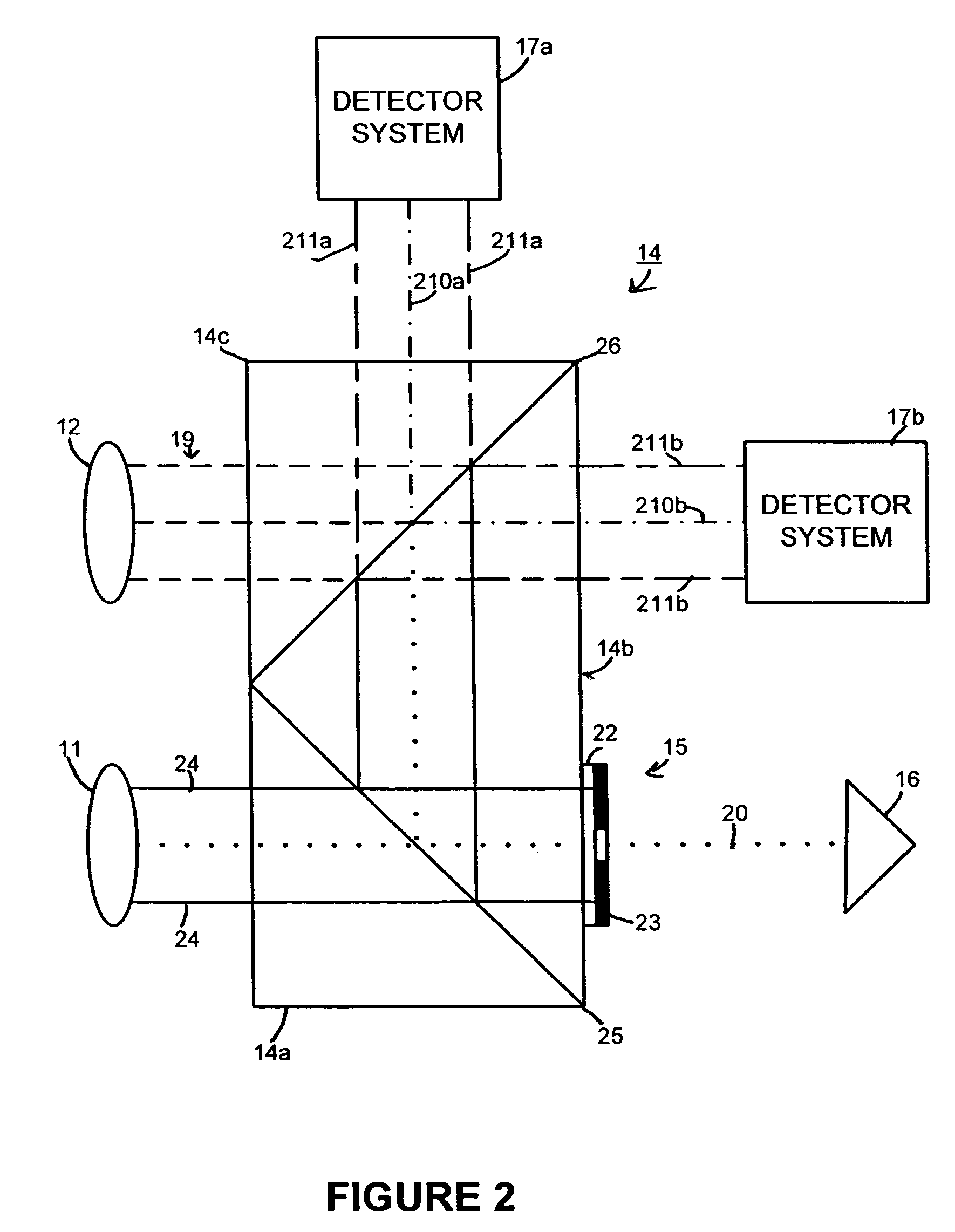Monolithic, spatially-separated, common path interferometer
a common path, monolithic technology, applied in the field of interferometry, can solve the problems of limiting the measurement resolution to approximately 1 nanometer, complex devices that are cumbersome to deploy and align, and various mechanical, thermal, optical variations, so as to improve the resolution over polarization-separated interferometers, reduce errors, and simplify deployment and maintenance of those systems
- Summary
- Abstract
- Description
- Claims
- Application Information
AI Technical Summary
Benefits of technology
Problems solved by technology
Method used
Image
Examples
Embodiment Construction
[0019]FIG. 1 is a block diagram depicting the primary components of a metrology gauge utilizing a monolithic, spatially-separated, common-path interferometer according to one embodiment of the invention. As shown in FIG. 1, the metrology gauge includes laser assembly 10, signal beam collimator 11, local oscillator (LO) beam collimator 12, interferometer 13, which is comprised of beam splitter and combiner optics 14 and reference optics 15, measurement reflector 16 and detector system 17.
[0020]Laser assembly 10 provides a signal beam 18, which includes signal measurement beam 20 (depicted as a dotted line) and signal reference beam 24 (depicted as a solid line), and LO beam 19, which is depicted as a dashed line, to signal beam collimator 11 and LO beam collimator 12, respectively. Signal measurement beam 20 and signal reference beam 24 are spatially distinct beams, as described in more detail below. The beams are generated within laser assembly 10 using one or more laser sources tog...
PUM
 Login to View More
Login to View More Abstract
Description
Claims
Application Information
 Login to View More
Login to View More - R&D
- Intellectual Property
- Life Sciences
- Materials
- Tech Scout
- Unparalleled Data Quality
- Higher Quality Content
- 60% Fewer Hallucinations
Browse by: Latest US Patents, China's latest patents, Technical Efficacy Thesaurus, Application Domain, Technology Topic, Popular Technical Reports.
© 2025 PatSnap. All rights reserved.Legal|Privacy policy|Modern Slavery Act Transparency Statement|Sitemap|About US| Contact US: help@patsnap.com



